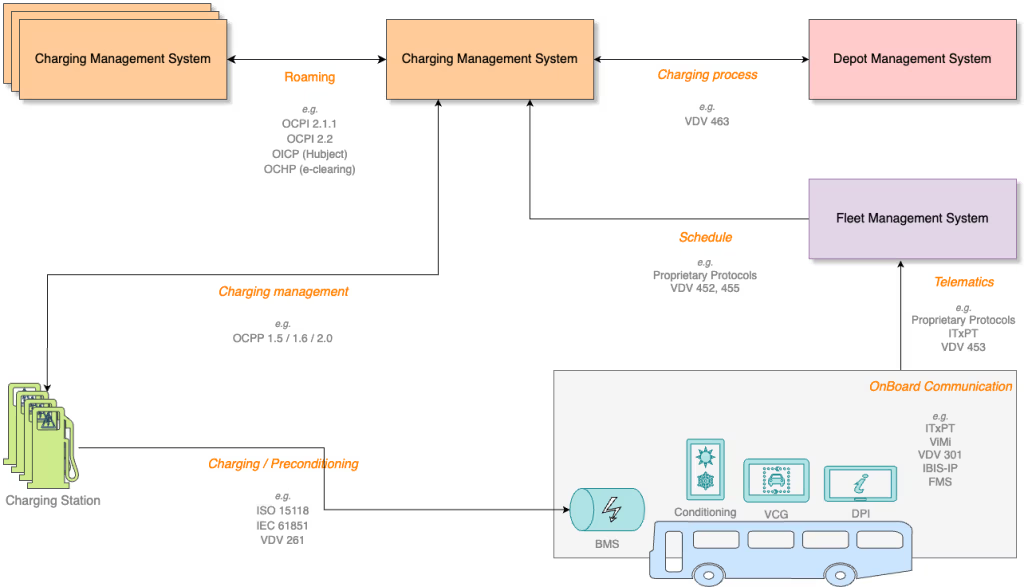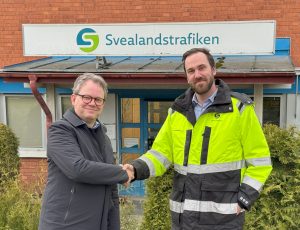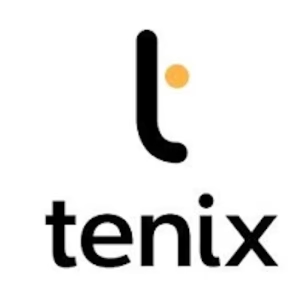By Grzegorz Masłowski, CTO
In the world of public transport, efficiency, interoperability, and passenger satisfaction are not just goals—they are necessities. At Saga Tenix, we believe APIs (Application Programming Interfaces) are the foundation of modern, connected, and sustainable transport systems.
APIs enable seamless communication between platforms, standardise processes, and open up opportunities for innovation. In this article, we highlight the most important APIs shaping public transport, how our systems leverage them, and why Saga Tenix has developed its own API to enhance operations.

The Backbone of Connected Public Transport
Protocols are the essential building blocks that enable modern public transport systems to operate efficiently and cohesively by facilitating seamless data exchange and interoperability. Through the use of standards like VDV-463 which supports real-time integration for charging management, VDV-261, enabling preconditioning of electric buses during charging, and VDV-301, standardising onboard information sharing, transport systems can achieve unparalleled connectivity. Additionally, frameworks like ITxPT Specifications provide a global standard for interoperability across diverse platforms, while OCPP ensures compatibility and efficient communication between EV chargers and backend systems.
Saga Tenix leverages these protocols and standards across its product ecosystem – such as Tenix Charge, Tenix Fleet – to optimise charging operations, manage fleets effectively, and deliver real-time updates. These integrations not only enhance operational efficiency but also ensure that Tenix solutions remain adaptable to the evolving needs of public transport systems worldwide.
Tenix Open Data Platform API: Bridging the Gaps
Recognizing the need for seamless operational integration, we have developed the Tenix Open Data Platform API to enhance the exchange of data and operational efficiency. Our API is designed with three key purposes in mind:
- Operational Data Exchange – the API supports the seamless exchange of data between our platform and customer systems, enabling comprehensive integration of fleet data, company structures (divisions and depots), and other operational details. This ensures all stakeholders can access and leverage critical information in real time.
- Telemetry Delivery and Acquisition – by enabling telemetry data to be delivered and obtained through the Saga Tenix API, we make it possible to utilise our products without requiring Saga Tenix equipment to be installed in vehicles. This flexibility ensures that transport operators can integrate our solutions into their existing infrastructure with minimal effort.
- Alerting and Alarming – real-time alerting and alarming functionality is integrated into the Saga Tenix API, enabling operators to monitor critical events and respond proactively to issues such as maintenance needs, operational disruptions, or safety concerns.
The API is an external representation of domain and logic that operates within the Tenix Open Data Platform. The API is constantly growing, adapting to diversified and growing needs of Saga Tenix customers. The current documentation of the Tenix Open Data Platform API can be found at https://tenix.tech
Tailored for PTOs and PTAs
Our customers, such as Public Transport Operators (PTOs) and Public Transport Authorities (PTAs), have distinct needs:
• PTOs require solutions that align with operational efficiency, fleet monitoring, and cost management.
• PTAs prioritise high-level oversight, regulatory compliance, and public service optimization.
The Tenix Open Data Platform is designed to cater to these unique requirements, ensuring both PTOs and PTAs achieve their specific operational goals.
Integration with Existing Systems
We recognise that our customers often have their own integration layers and already use a variety of systems. The Tenix Open Data Platform and the exposed API is built with this diversity in mind:
• Flexible Architecture: Supports seamless connectivity with existing tools and platforms.
• Customizable Integration: Allows easy adaptation to various workflows and systems.
• Non-Disruptive Deployment: Enables quick integration without disrupting current operations.
Tenix Open Data Platform and the Tenix Open Data Platform API provides the tools and flexibility needed to enhance your operations, regardless of the existing infrastructure or complexity of your systems.
Bringing It All Together
APIs are the unsung heroes of public transport, driving interoperability, enhancing efficiency, and creating better passenger experiences. By leveraging industry-standards like VDV-463, VDV-261, VDV-301, ITxPT, and OCPP, and combining them with our own Tenix Open Data Platform API, we are delivering solutions that meet the demands of modern transport systems.
Whether it’s managing charging infrastructure, delivering real-time passenger information, or enabling seamless operational integration, Saga Tenix ensures our systems are designed to adapt to the evolving needs of public transport operators and passengers alike.


